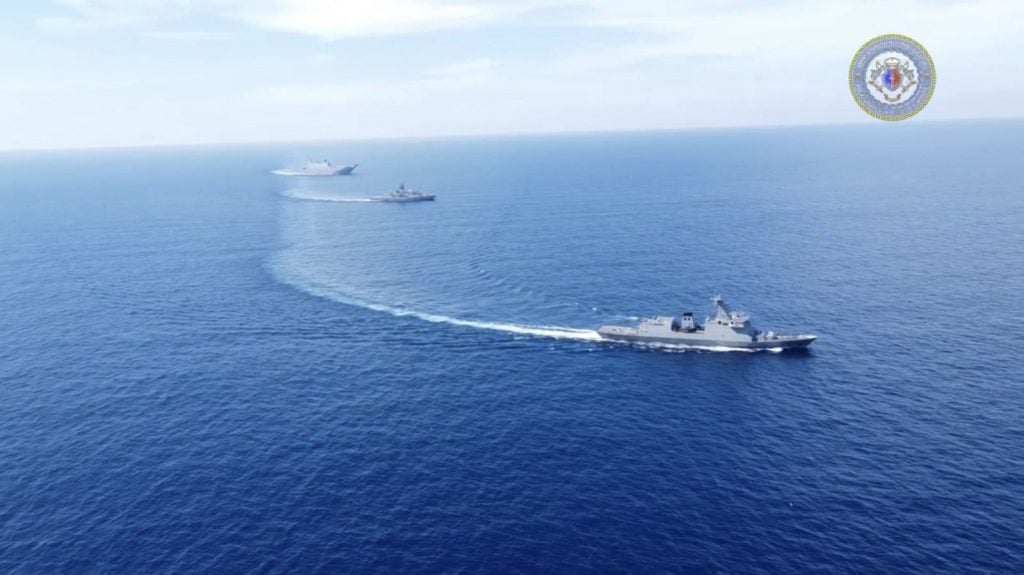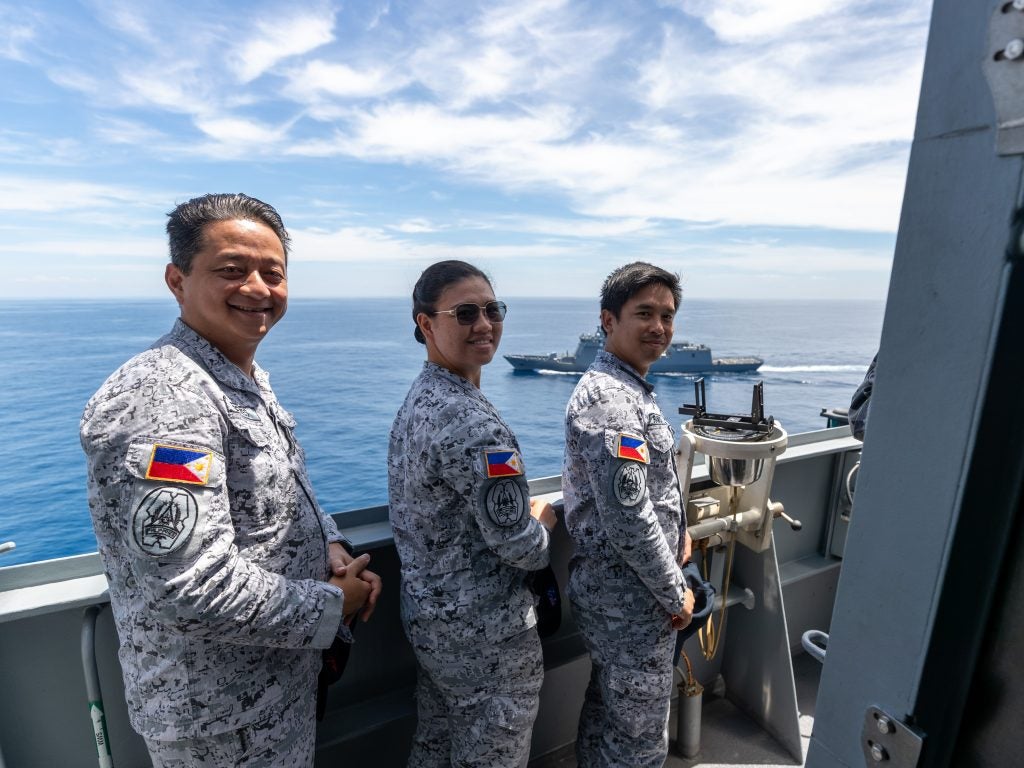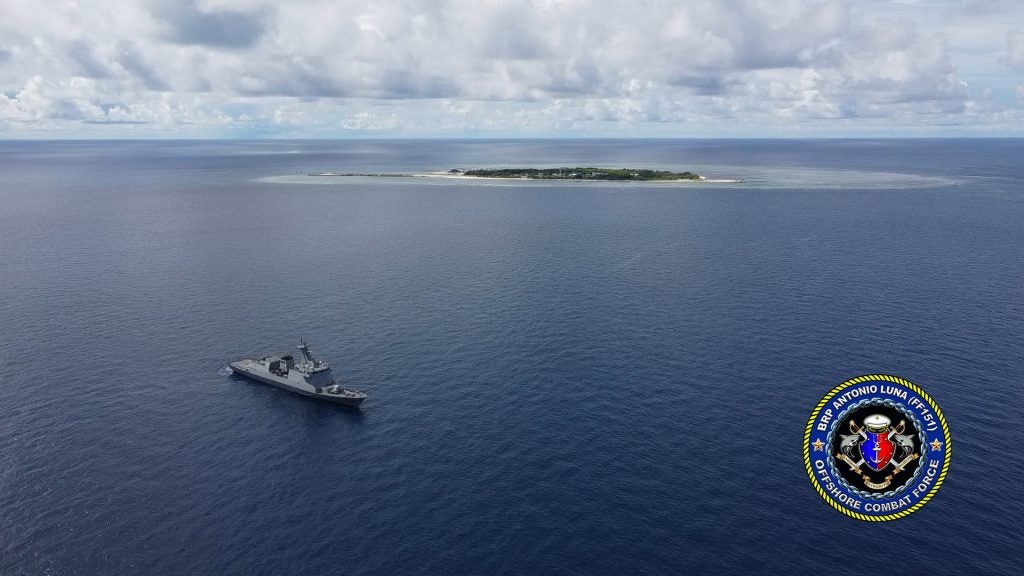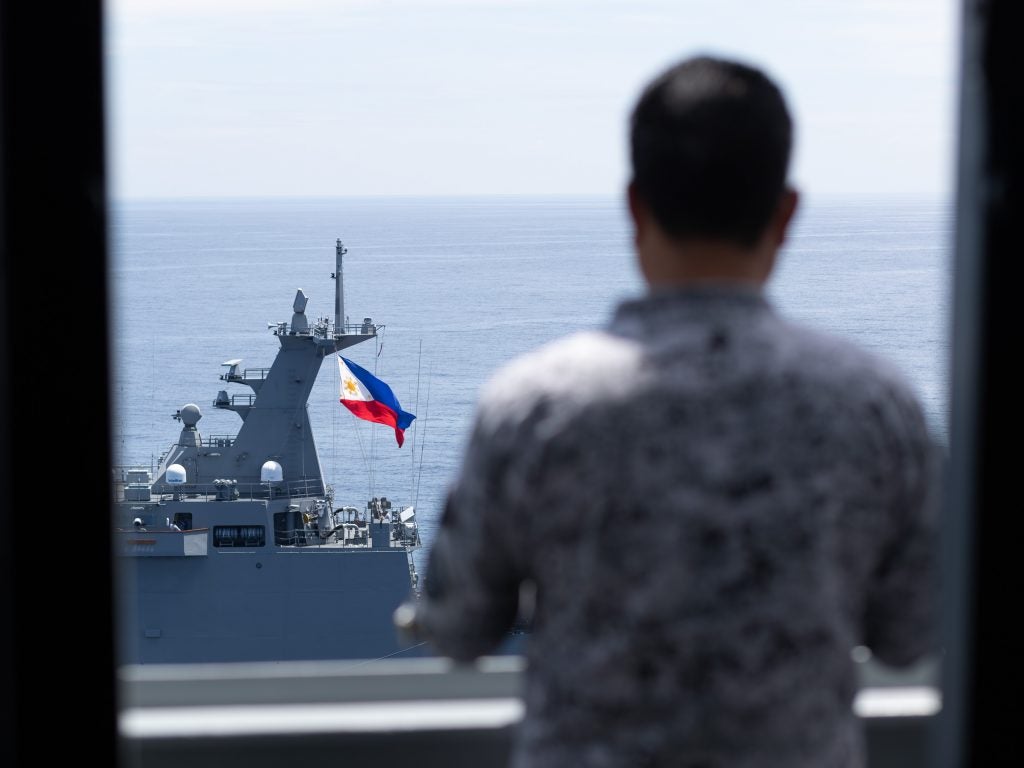Philippine Naval Modernization Comes Into Focus During Exercises with Australia
On 26 September, Philippine Navy (PN) and Royal Australian Navy (RAN) ships conducted drills part of Exercise Lumbas 2021 off Cabra Island in the West Philippine Sea. For Australia, the exercise would be a continuation of Indo-Pacific Endeavor 2021 (IPE21). Participating ships included BRP Antonio Luna, HMAS Canberra, and HMAS Anzac. A release from the Philippine Navy stated that the Australian contingent would later sail for Manila, where there would be further interaction with the Philippine Navy on the ground.

These activities are one of many conducted under IPE21 whose purpose, according to a release from the Australian Department of Defence, is “IPE promotes security and stability in Australia’s near region through bilateral and multilateral engagement, training and capacity building. Australia is committed to making effective contributions to humanitarian and security efforts in the Indo-Pacific region. Australia’s vision for the Indo-Pacific is a region that is secure, open, prosperous and resilient.” The task group has interacted and visited Brunei, Singapore, Malaysia, Thailand, and Vietnam. The Philippines is now the latest participant, with this exercise. IPE21 is expected to wrap up in November.
For the PN, this is the latest exercise in BRP Antonio Luna’s career. According to Philippine state media, activities in Exercise Lumbas 2021 included: “maneuver exercise, division tactics, and formations in column and abreast using NATO coded messages.” Prior to this, BRP Antonio Luna held two major exercises with foreign partners. From the 15th to 17th of August, the frigate participated in Southeast Asian Cooperation and Training 2021. And on 23 August, the ship held drills off Palawan in the West Philippine Sea (WPS) with the Indian Navy ships INS Ranvijay and INS Kora. In both of these exercises, BRP Antonio Luna demonstrated interoperability and partook in various drills with foreign partners. The ship also carried out patrols in the West Philippine Sea, being seen at the Malampaya gas field and off Pag-asa Island in mid-July and after training with the IN respectively. The most recent drill prior to Exercise Lumbas, as seen in a release three days before meeting up with the Australian task group, focused on chemical, biological, radiological and nuclear (CBRN) training.

Philippine Naval Modernization and Recent Regional Developments
Commissioned on 19 March, 2021, BRP Antonio Luna is the second ship of the Jose Rizal-class. Ordered from South Korean shipbuilder Hyundai Heavy Industries, the class makes up the Philippines’ first ever guided missile frigates. The class is also one of the mainstay procurements in the Philippines’ Horizon programs, which aim to modernize the Armed Forces of the Philippines. However, the many fitted for but not with (FFBNW) and uninstalled systems on the ships let the class down in many areas. One example can be seen in the classes’ lack of area air defense capabilities, as they have no installed vertical launch cells (VLS). The ships are currently relying on Mistral short-range air defence missiles and the main cannon for protection. Nonetheless, the class offers up modern hulls to the Philippine Navy that have the endurance to patrol waters contested by regional rivals.

The two hulls are also desperately needed, as the PN retires large amounts of older vessels with no suitable replacements. However, upcoming procurements in the Horizon programs aim to remedy this. One of these procurements lies in the form of the Corvette Acquisition Program (CAP). HDC-3100, an improved version of the existing Jose Rizal-class HDF-2600, serves as a strong contender for this program. Moreover, it is expected that if acquired these ships would come with armament instead of being FFBNW. Another Horizon acquisition resides in the procurement of six offshore patrol vessels (OPVs) built by Austal, an Australian company, in a Cebu based shipyard. The Philippine Coast Guard (PCG) modernization program, while separate from Horizon, should also be of note. With the upcoming introduction of the Teresa Magbanua-class patrol vessels, these being the largest ships that the organization has ever possessed, the PCG fleet is steadily growing.
This interaction between the Philippines and Australia follows the recent creation of AUKUS, and the announced acquisition of nuclear attack submarines for Australia. The Philippines reacted positively towards the news. With the Philippine Foreign Minister stating, “The enhancement of a near-abroad ally’s ability to project power should restore and keep the balance rather than destabilise it.” The Philippines’ stance sets it apart from other regional powers, such as Malaysia and Indonesia, who worry that the acquisition of nuclear attack submarines would result in a destabilizing arms race. This sentiment could be due to the Philippines’ situation, with China increasingly encroaching on Philippine holdings in the West Philippine Sea and an insufficient force to protect said holdings. Lacking the domestic capabilities to set a balance, Manila looks to foreign partners with similar interests to help while also building up its own capabilities. As seen with increased cooperation with foreign countries and the Horizon modernization programs.
Cover header image courtesy of the Commonwealth of Australia

